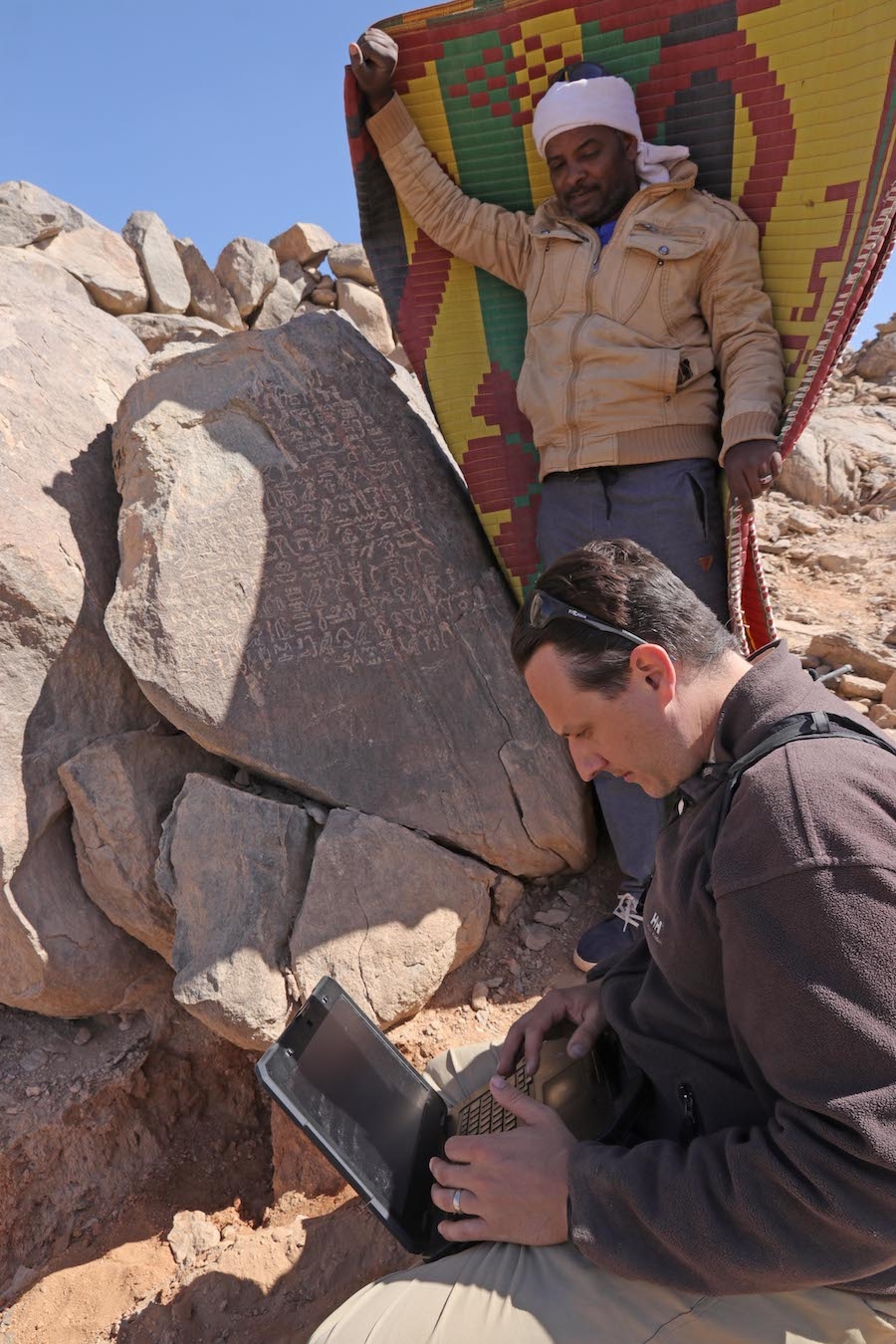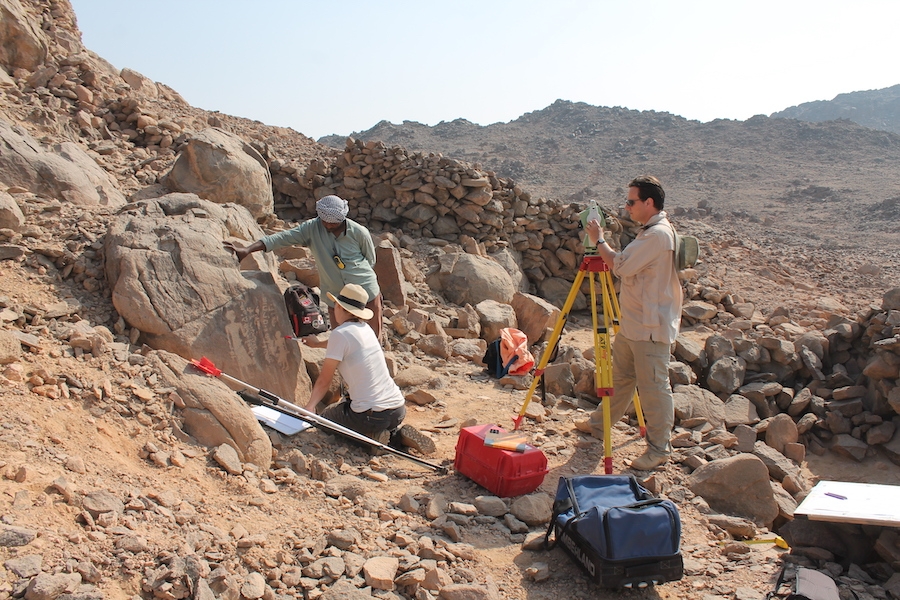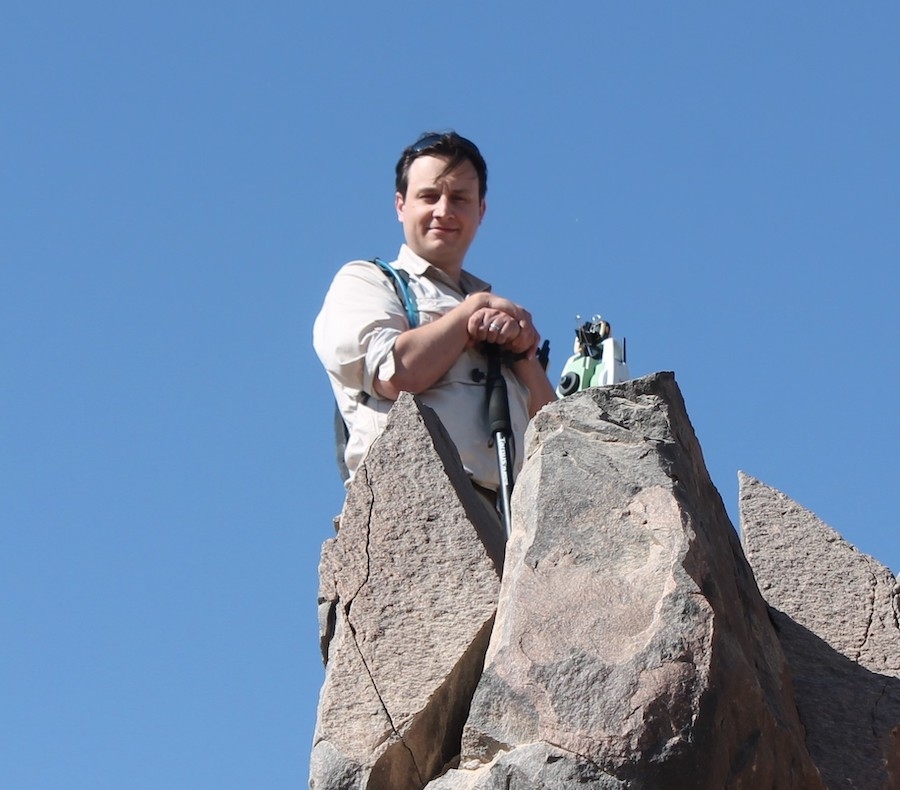Event: Virtual Pizza Talk: Recording the Inscribed Spaces of Wadi el-Hudi: Challenges and Promises of Digital Rescue Archaeology in a Uniquely Inscribed Archaeological Landscape
Event Details
Bryan Kraemer
Egyptologist at the Robert and Frances Fullerton Museum of Art
California State University, San Bernardino
Since 2014, the Wadi el-Hudi Expedition has been surveying archaeological sites in Egypt’s Eastern Desert connected with ancient amethyst and gold mines. The ancient activity was concentrated in two periods, Egypt’s Middle Kingdom (circa 2000 -1700 BCE), and the Early Roman Period (late 1st century BCE to 2nd century CE). During the first period, the ancient miners, guardians, and administrators left an abundant epigraphic record of their activities. To date, 270 separate inscriptions have been recorded at Wadi el-Hudi. These show a wide range of formality in inscriptional technique between carefully crafted monumental stelae with long hieroglyphic texts on one hand to rock-pecked petroglyphs on the other. Partially published by Ahmed Fakhry in 1952 and Ahmed Sadek in 1980-85, the inscriptions of Wadi el-Hudi have contributed significantly to our understanding of how ancient Egyptian desert mining expeditions operated. The Wadi el-Hudi Expedition has now for the first time recorded these inscriptions within their archaeological context using a photogrammetry-based epigraphic methodology. This record is fully integrated into the 3-dimensional survey of the entire Wadi el-Hudi topography and archaeological remains. It therefore allows us not only to record but also to present the inscriptions in a digital reproduction of their original context. This detailed 3D record is especially important since modern gold mining threatens the existence of archaeological sites in this remote area of the desert.

In this talk, I will present a selection of the current results of the Wadi el-Hudi Expedition’s epigraphic and archaeological survey. Taking from interpretive theories of Geosemiotics, I will present case studies from the results of the epigraphic working understanding how the inscriptions at Wadi el-Hudi were embedded in a nexus of social and linguistic actions that contributed to their meaning and defined the local versions of what one might call an epigraphic habit. Additionally, I will outline how we have incorporated 3D capture into every aspect of recording at Wadi el-Hudi and show the results and challenges of using this methodology.
The Wadi el-Hudi Expedition works under the auspices of California State University, San Bernardino and in compliance with the Ministry of Antiquities in Egypt. The expedition has conducted fiveseasons since 2014from which Iwill draw these results.
 Bryan Kraemer is an Egyptologist at the Robert and Frances Fullerton Museum of Art (California State University, San Bernardino -CSUSB),where he is in charge of developing content related to the museum’s collections of artifact’s from Ancient Egypt. He is also a lecturer in the History Department at CSUSB. Bryanhas a Masters in Egyptology from the University of Chicago and a Masters in Archaeological Computing from Southampton University. He is also working on finishing his Ph.D. in Egyptology at the University of Chicago. Bryan’s research interests are in Ancient Egyptian religion and ritual, Ancient Egypt and the Classical World, Ancient Egyptian language, art, and archaeology, digital humanities, GIS, and digital frontiers in museums. He has worked and studied in Egypt over the last twenty years and taught Ancient Egyptian language and archaeology at University of Chicago, Princeton University, and California State University, San Bernardino. Bryan is currently working on a monograph on his work with the festival of Osiris at Abydos and a 3D archaeological atlas of maps from his work as co-director of the Wadi el-Hudi Expedition (www.wadielhudi.com).
Bryan Kraemer is an Egyptologist at the Robert and Frances Fullerton Museum of Art (California State University, San Bernardino -CSUSB),where he is in charge of developing content related to the museum’s collections of artifact’s from Ancient Egypt. He is also a lecturer in the History Department at CSUSB. Bryanhas a Masters in Egyptology from the University of Chicago and a Masters in Archaeological Computing from Southampton University. He is also working on finishing his Ph.D. in Egyptology at the University of Chicago. Bryan’s research interests are in Ancient Egyptian religion and ritual, Ancient Egypt and the Classical World, Ancient Egyptian language, art, and archaeology, digital humanities, GIS, and digital frontiers in museums. He has worked and studied in Egypt over the last twenty years and taught Ancient Egyptian language and archaeology at University of Chicago, Princeton University, and California State University, San Bernardino. Bryan is currently working on a monograph on his work with the festival of Osiris at Abydos and a 3D archaeological atlas of maps from his work as co-director of the Wadi el-Hudi Expedition (www.wadielhudi.com).


